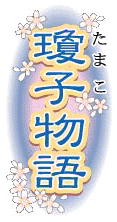|
Miss Nagasaki's Homecoming
Across
a Century |

|
| 3 |
| Expectations |
Opportunity
to Consider |
In the fall of 1927, just before she was given to America, "Tamako Nagasaki" toured throughout Nagasaki Prefecture and took part in many exhibitions and farewell ceremonies. One of the schools where the doll was exhibited was Togitsu Common School (now called Togitsu Elementary School), located in Togitsu Village (now called Togitsu Town). A photo of the exhibition that took place there was kept in an album of Eimatsu Honda (deceased), who served as principal at the school during this time. Former high school teacher Masato Honda, who now has the album connected with Tamako's discovery after 73 years, says, "If I could meet Tamako, I would probably feel like I were meeting my own sister, relative, or aunt. It's surprising that this photo, which was looked at casually for many decades, was something that recorded such a history. If Tamako would return home, how happy also my father would have been. I really want her to have a homecoming."

|
|
|
Photo of "Tamako Nagasaki" displayed before all the children at Togitsu Common School (October 13, 1927). From album of Masato Honda. |
|
Principal Tsuguharu Tsutsumi at Togitsu Elementary School remembers last summer's event when a photo of Tamako's farewell was found. The school's yearbook from those days has the following descriptions, "Jane Marshall [name as written in Japanese not certain], doll given by the American Committee for World Friendship Among Children, May 5, 1927,"and "On October 13, farewell ceremony held at the school for the Torei Ningyo (Doll of Gratitude) going to America, which was sponsored by the County Educational Association."
In connection with finding the photo, a new Friendship Doll named "Kendra" was given this spring by Mr. Gulick, 3d. Principal Tsutsumi says, "The children grew fond of Kendra by touching her hands and stroking her hair. Everyone wants to give a warm welcome home to Tamako, who was sent from this school."
Cases where these dolls have been included in the curriculum for ethics and peace education are increasing. In the local area, Hirobumi Toyama (59), a teacher at Nagasaki Technical High School, has researched the history of the Japanese-American doll exchange and has made use of this in peace education activities. "Although only two Blue-eyed Dolls in Nagasaki Prefecture made it through the madness of the war and survived, they are the pride of this prefecture," says Mr. Toyama. "When Tamako returns home, she will probably go on a splendid, gorgeous tour of several cities in the prefecture together with the 'Blue-eyed Dolls' from 75 years ago and with the Friendship Dolls given more recently." He emphasizes, "This tour will have great significance, with an opportunity for people to consider the dolls' meaning, since they offer something from several standpoints, including true friendship, keeping peace, and culture."
Three sisters, living in Hirado City in those days and who
attended Hirado Elementary School when it was an girls' school, have a vivid
memory of meeting Tamako with her sky-blue kimono adorned with flowers. The
oldest sister, Kiyo Asakura (87), now lives in Nishinomiya. "Four months ago
one of my younger sisters passed away, but how happy she would have been to meet
Tamako," she said with a choked voice.
(Culture
Section, Miss Nagasaki Data Collection Team)
Published on August 20, 2001
| Part 1 | Part 2 | Part 3 | Part 4 | Part 5 | Part 6 | Part 7 | Part 8 |